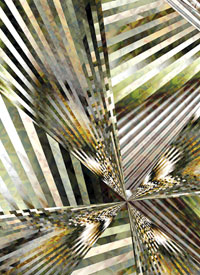 Rejoice! In dollar terms, our GDP has grown by 10 percent in the last two months.
Rejoice! In dollar terms, our GDP has grown by 10 percent in the last two months.
Kind of. We need to understand where the growth has come from. The appreciation of the Indian rupee against the dollar means the same for the Nepali rupee. Which means that the denominator by which we divide the GDP in Nepali rupees has reduced over the last few months, which in turn means: a staggering rise in GDP. Six years after we wrote about reducing the denominator ('Free the Nepali rupee', # 59), it seems like it is happening.
Regular readers know that one of the Beed's favourite talking points is the miraculous \'political\' exchange rate that has changed only eight times since it was put into place on 13 April 1960. The 1.6 parity established on 1 February 1993 has been a faithful constant through our various economic and political upheavals. But we don't have any research papers or donor dollars funded studies on what this fixed exchange rate actually does to our economic analysis. (Intriguingly, no one is blaming this on regressive forces either.)
The current exchange rate against the dollar, Rs 66, is close to the rate we had nine years ago. We need to know from the government and the Nepal Oil Corporation what impact this has had on the price of petroleum. If we were brave, we could use this time, when the price of oil is so low in rupee terms, to deregulate the sector.
The state electricity utility, which has dollar-based power purchase agreements with some power producers, is also benefiting from the weakness of the dollar vis a vis the rupee. It's time that they passed these gains on to the end consumer.
The pricing of projects where there is a high import component will also have to be reviewed. For every million dollars of committed project costs, the exchange rate appreciation has reduced costs by Rs 1 million. These factors have to be accounted for, and donors who have budgeted spendings for Rs 75-to-the-dollar need to rework computations and pay more dollars to make up the shortfall.
There are so many other vital questions: does the appreciation of the rupee lead to inflation or should the price of commodities come down? Will the Indian state now have reason to 'politically' revise the exchange rate upwards to Rs 1.80 as a corrective measure? If so, do our experts at Nepal Rastra Bank have a response ready? Does this affect our remittances in rupee terms? If we do add significant value to exports, how will an upward movement of the rupee affect export-oriented industries?
And most important of all-might it be time to think about getting out of the fixed exchange regime?
We can talk endlessly about social inclusion, federalism, and the works. But we do not have time to think about our economy. Our self-proclaimed intellectuals, economic experts who run think tanks, and seminar frequenters have a lot to answer for. The people deserve healthy debate and they aren't getting it.



